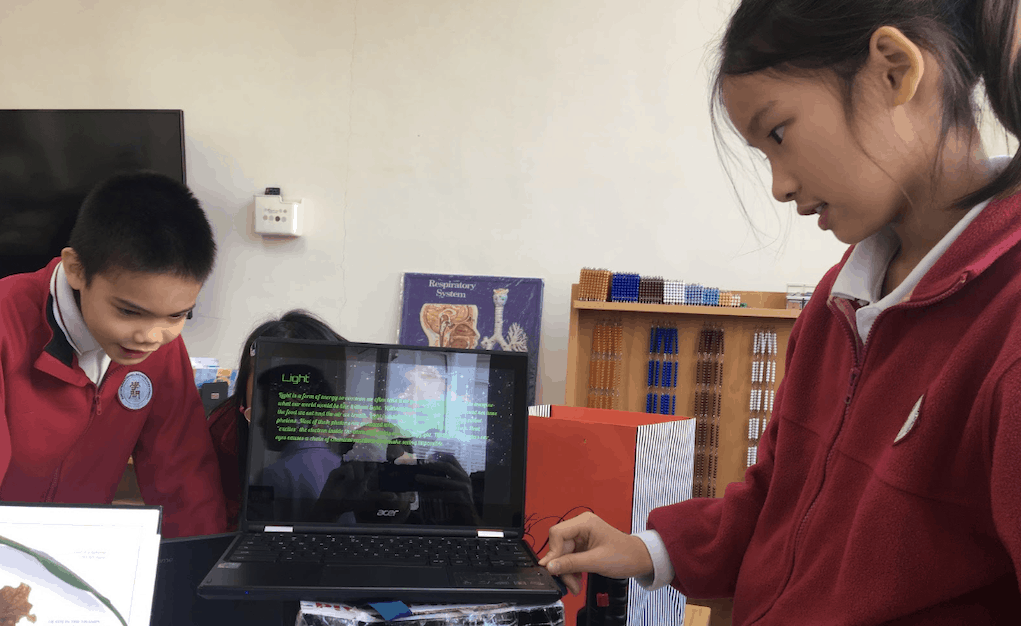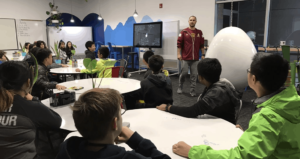Enhancing Innovation in the Workplace through 5 Montessori Conditions

‘21st Century Skills’ has been the catchphrase in nearly every education camp for the last two decades. But here we are in 2019, and we are still hailing them as the holy grail of education. The 21st Century is already centuries old.
According to the 2018 The Future of Jobs Report, an independent research body, in just five years, approximately half of the jobs will be ones that don’t exist today. Many of these jobs will be automated, shifting the workforce away from manual routines to more flexible, divergent, and highly complex tasks.
Companies that allow for this new direction will thrive; while those who do not, will slowly die.
According to ‘Creating a Culture of Innovation’ by ‘entrepreneur.com,’ and ‘Six Ways Leaders can Build a Culture of Innovation’ by ‘talent culture,’ two leading voices for 21st century innovation, creating an innovative culture requires a workplace that allows for the following five conditions:
- Dedicating time for creative projects
- Rewarding innovation and divergent ideas
- Empowering employees to make decisions
- Allowing for failure
- Measuring what matters most
The most innovative companies in the world integrate these five characteristics into everything they do. Companies like Google provide employees ’20 time’ to work on projects they find personally compelling. This flexible time has allowed for the most innovative breakthroughs including Gmail and the Wifi weather balloon. At Amazon, creating these same conditions has created an expedited shipping process, integrating human ingenuity and artificial intelligence seamlessly.
And while innovations around the future of work have surfaced in visible ways, change has been slower to take root in schools. Schools are simply not designed in a way that inspires innovation and creativity; handcuffed by schedules that dictate where students should be at what time; confined by rigid curricula that mandate what knowledge and skills they must acquire and boxed in by an outdated reporting system that categorizes students by grades and percentage points.
But what if schools weren’t confined by the same outdated systems of the past? What if they were free to innovate and had built in structures to foster it in their students?
Some schools do.
Montessori Schools and 21st Century Innovation
Like the most innovative companies in the world, Montessori schools are not handcuffed by the traditional structures that have held schools back. Schedules include long uninterrupted work cycles; classes mixed across ability and grade level; and a learning environment organized in a way that allows for exploration and creativity.
As a result, Montessori schools produce some of the world’s most divergent and creative thinkers.
This article will provide greater detail around the conditions in Montessori schools that align with those of the innovative workplace through a look at The International Montessori School (IMS) of Hong Kong.
Condition #1: Dedicating Time for Creative Projects
Every week at IMS students as young as 8 years old meet in small groups to work on community projects. Projects include composting, paper making, school comic writing, sports lessons for the younger years, and bilingual history fairs to celebrate IMS’ dual language culture. My personal favorite is the student written, directed and produced film set to release in the Fall of 2019: ‘Troy: A Montessori Production.’ The film will re-enact the development of Ancient Greece and cement concepts learned in the classroom. All CAS (‘Creativity, ‘Action’ and ‘Service’) projects are student-initiated, with small groups determining timelines, tasks and deadlines necessary for their completion. A CAS advisor meets weekly with groups to ensure they are making progress but does not interfere.
Through these projects, students learn valuable 21st century skills that are difficult to replicate in the traditional classroom. They learn how to manage their time, resolve conflicts, coordinate group tasks, and make decisions that lead to the betterment of their community.
Questions for Reflection: What time do you allow for creative projects? What processes do you put into place to help employees find success?

Condition #2: Rewarding Innovation and Divergent Ideas
At IMS, not only are the most divergent ideas encouraged; they are put on display. In uninterrupted three- hour work cycles, students are free to pursue tasks they want to personally extend. In the class I visited, a group of students worked on classifying snake species in Hong Kong; while others researched the influence of aerodynamics on flight. Two more students modeled the concept of light refraction using a cardboard box, flashlight, and reflective piece of wrapping paper.

Although the invention and accompanying presentation were not complete, the teacher insisted they present the concept to class. This made me smile. The teacher wisely chose the most deviant idea to reward. Not surprisingly after the presentation was complete, students scrambled to create inventions of their own.
Questions for Reflection: How do you encourage risk-taking behavior in your organization or with young people?
Condition #3: Empowering Employees to Make Decisions
Unlike in the past where workers had clear tasks within a top-down hierarchy, the 21st century is highly networked and nuanced, with decisions needing to be made at all levels, regardless of one’s position in the organization. At the International Montessori School, students as young as 7 are empowered to make the most important decisions. The Student Council at IMS- a student-run organization, meets weekly to address issues at school and generate ideas to solve them. In response to the issue of bullying and misbehavior on the bus, students have independently created bilingual rule cards for the ‘bus mothers’ to use. In response to conflict on the playground, students across four grade levels have designed a ‘friendship bench’ for students to work out disputes. In both projects, students had to use a decision-making matrix to analyze their ideas, as well as create a compelling presentation to get school management on board.
Through these projects, students were not only empowered to make decisions but more importantly, they learned how to solve complex problems and work together with multiple stakeholders in the organization. These 21st Century Skills will help equip them for a workforce with employees across all backgrounds, ages, beliefs and working styles.
Questions for Reflection: How do you provide for employee voice in your organization? How do you bring them into the decision making process? What structures do you use to support them?

Condition #4: Allowing for Failure
In a culture of high stakes tests and class ranks, it’s hard for traditional schools to allow for failure. They fear that by doing so, it will lower the quality of work and hurts students chance for success in the future. The most innovative schools and organizations understand the opposite to be true. By allowing for failure, they can create the conditions for success.
At IMS, failures, and consequently, success occurs on a daily basis.
When their makeshift rocket wouldn’t fly correctly, students adapted the design, mending broken pieces of cardboard and tape to ensure it launched successfully on the next attempts.
At IMS, the teacher’s job is to create an environment that allows students to OWN both their successes and failures.
Questions for Reflection: How do you prepare an environment that allows for failure? Do you celebrate failure as much as you do success? How might you provide feedback for employees to learn from their experiences?
Condition #5: Measuring What Matters Most
The most innovative organizations in the 21st Century don’t use an outdated barometer to measure 21st Century employee performance. They know that the best results are achieved through an environment that values collaboration and a culture of continual feedback.
IMS clearly values collaboration. In each classroom, there are over 20 teachers and only two adults. That’s because in Montessori schools, anyone in the classroom can serve as a teacher. Older students introduce younger children to math concepts they learned the prior year and young children assist older children in concepts they may have learned outside of school. In one classroom, I observed a younger student teaching his classmates about renewable energy. On the other side of the room, an older student put together a model of Ancient Greek architecture to share with her younger peer. This non-competitive environment emphasizes the process of learning as much as it does the results.
Questions or Reflection: How do you encourage collaboration in your company or workplace? How do you measure performance? What feedback structures do you put in place to monitor improvement?
In 2019 we are still talking about 21st century skills as if they are something students will need in the future. Students need these skills now. If we don’t create the conditions that allow for innovation within our classrooms/schools, we are already behind. Fortunately, it doesn’t require an advanced degree and years of experience to innovate; it simply requires an open mind and willingness to put in place the systems we know to create the most innovative results.
Dedicate time for creative projects, reward innovative and divergent ideas, empower students to make decisions, allow for failure, and measure what matters most.
Stay in-the-know with innovations in learning by signing up for the weekly Smart Update.







0 Comments
Leave a Comment
Your email address will not be published. All fields are required.